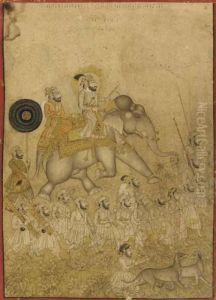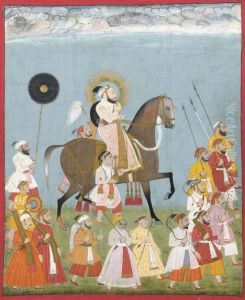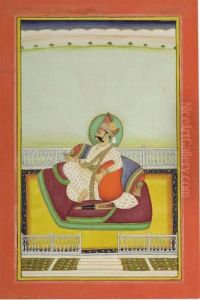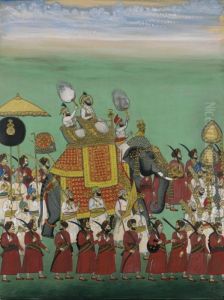Maharana Sangram Singh Ii Paintings
Maharana Sangram Singh II, often referred to as Sanga, was a significant figure in the history of the Mewar region in Rajasthan, India. Born in 1690, he was a member of the Sisodia Rajput dynasty, which had a long-standing tradition of rulership in the region. Sangram Singh II ascended to the throne of Mewar in 1710, succeeding his father, Maharana Amar Singh II. His reign was marked by efforts to restore the prestige and power of Mewar, which had waned under previous rulers due to internal conflicts and the pressures from the Mughal Empire.
During his reign, Maharana Sangram Singh II focused on strengthening the administration of his kingdom and revitalized its military capabilities. He was known for his diplomatic acumen, which he used to forge alliances with neighboring Rajput states, creating a unified front against common threats. This period witnessed Mewar regaining some of its lost territories and influence, albeit amidst constant challenges from the Marathas and the Mughals.
One of the notable aspects of Maharana Sangram Singh II's rule was his patronage of the arts and culture. He commissioned the construction of several notable architectural projects, including palaces and temples, which contributed to the cultural renaissance of Mewar. His court was a vibrant center for poets, artists, and scholars, reflecting the ruler's commitment to the promotion of culture and education.
Maharana Sangram Singh II's reign came to an end with his death in 1734. He was succeeded by his son, Maharana Jagat Singh II. Despite the challenges that persisted during his rule, Maharana Sangram Singh II is remembered for his efforts to maintain the sovereignty of Mewar and for his contributions to its cultural legacy. His leadership during a turbulent period in Rajput history is celebrated, and he is regarded as one of the notable rulers of the Mewar kingdom.



